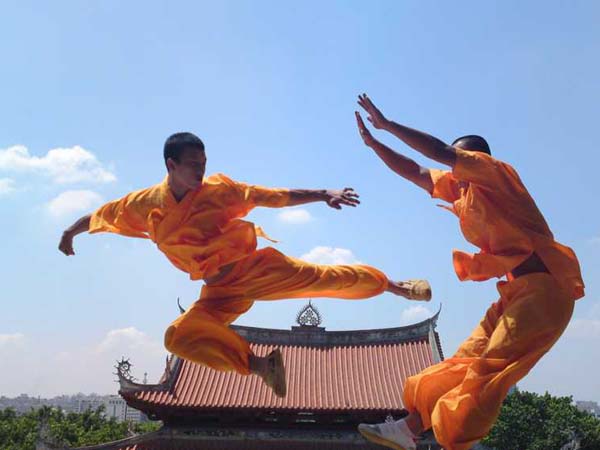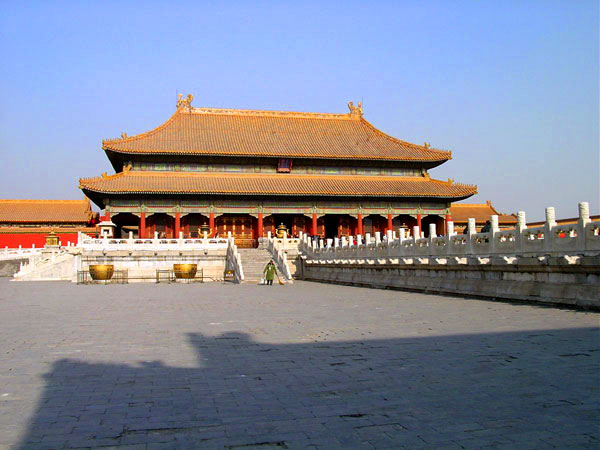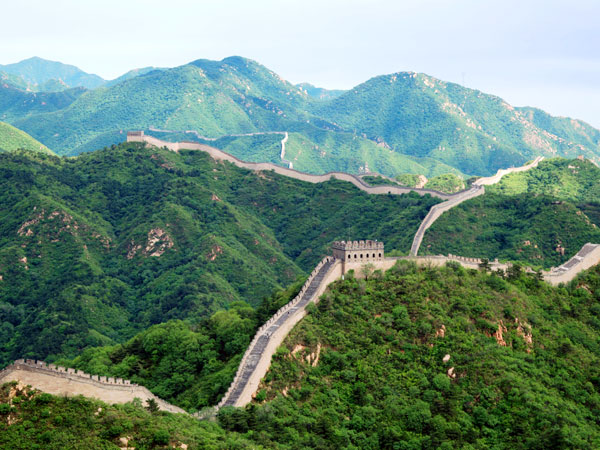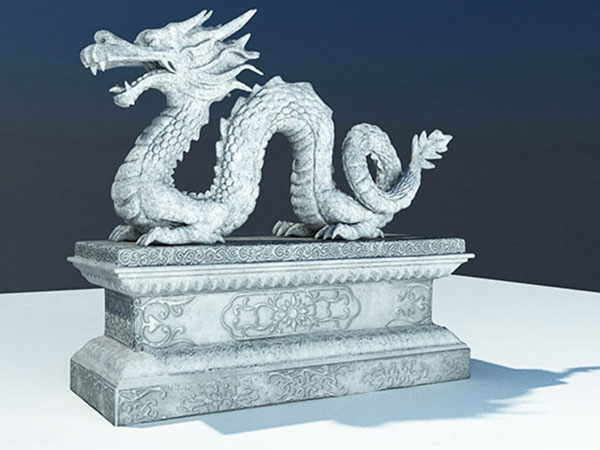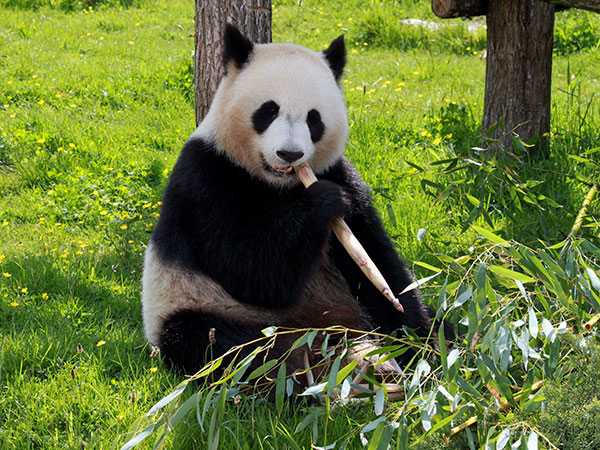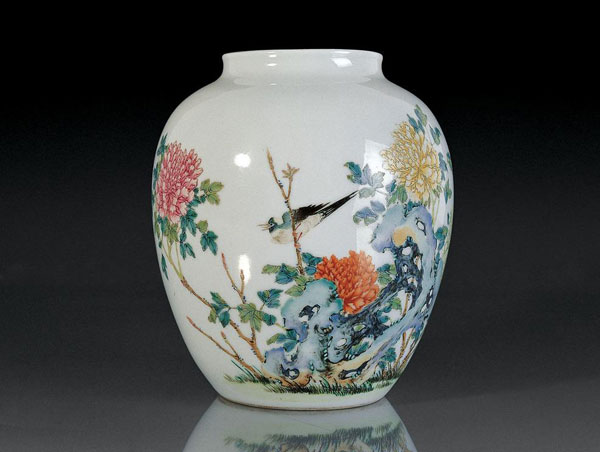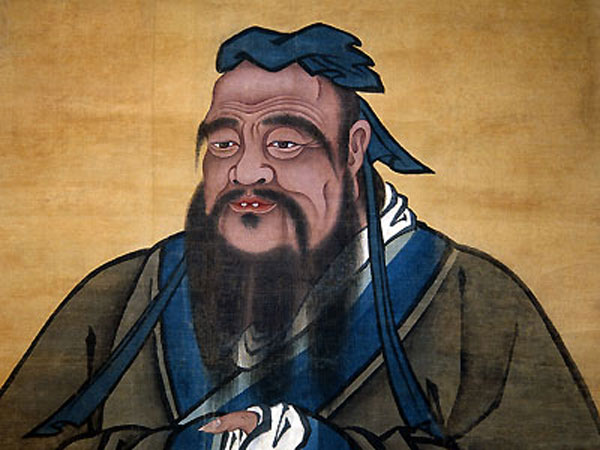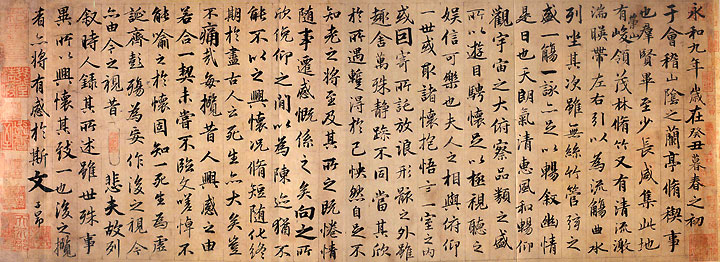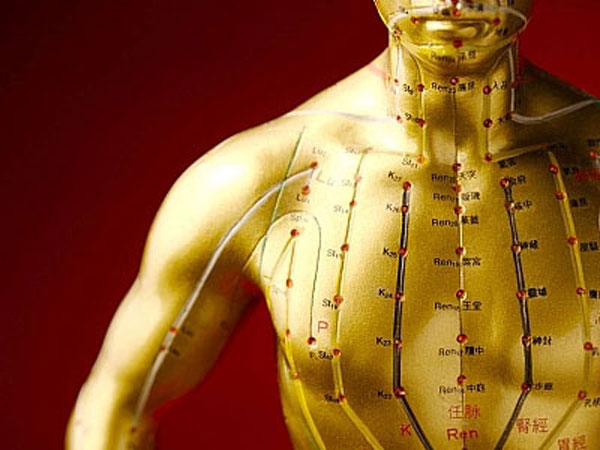What are the Symbols of China? -Panda? The Great Wall? The Forbidden City? Yes, they all are considered as symbols of China, and there are more symbols of China. For a better understanding of China, come with TopChinaTravel, and read this article about China symbols.
When it comes to China, the first things that comes to your mind possibly are the symbols of China. Those things may be real, or virtual. For real things, they may be buildings, handcrafts or animals, and for virtual things, they may be images or tales. If a thing is referred to a symbol of China, it has features like representing Chinese culture, having a huge influence for hundreds of years, and loved by most Chinese people.
Chinese Martical Arts
Chinese Martial Arts, 武术 Chinese pinyin: wǔ shù, popularly known as Kung Fu, are a combination of fighting styles that have developed over the centuries in China. Kung Fu is originally practiced by monks of Buddhism or Taoist priests, and it is used to body building and physical fitness.
Shaolin Kungfu is created and practiced by monks in Shaolin Temple, and it is mainly composed of Shaolin quan and Shaolin gun or Shaolin stick. Shaolin quan counld be played with weapons or with weapons, and Shaolin stick is the most used weapon in Shaolin quan, and made from wood, and it is also a set of Shaolin Kungfu and Shaolin monks are good at using sticks. Shaolin Kungfu is first created in the fifth and sixth century, and used to strengthen body and protect temples. For years of development, people create sets of Shaolin Kungfu and different styles of Shaolin Kungfu. According to weapons and skills, Shaolin Kungfu is divided into quanshu or Shaolin quan, gunshu/stick, jianshu/sword, qianghsu/spear, daoshu/ knife, etc. According to characters, it is divided into internal Kungfu, external Kungfu, hard one, soft one and qigong.
Taiji quan is the Kungfu of Taoists, created by Zhang Sanfeng, a Taoist, and listed as national intangible cultural heritage. Usually, it is played without weapons, and has dozens of sets of practicing methods. Taiji quan is fused with philosophies of Taoism, like Taiji and Yin and Yang, and featured with its softness, slowness and flexibility.
Shaolin Kungfu is popular among youth, and Taiji quan is popular among old people. You may see performances of Shaolin Kungfu in festival activities, especially in Spring Festival Gala, and you may see old peoples play Taiji in gardens if you are in China. Among so many practitioners, Bruce Lee opened the eyes of the Western world to the fascinating practices of Chinese martial arts, and Jackie Chan makes Chinese Kungfu more popular in the world. Celebrities good at Chinese Kungfu are Donnie Yen, and Zhao Wenzhuo. For a further reading about Chinese Kungfu, please click.
Shaolin Kungfu is the best-known Chinese Martial Art that represents the External. While Taichi of Taoism is another outstanding martial art in China that stands for Internal.
The Forbidden City
The Forbidden City, also known as the Imperial Palace, is the royal palace of the Emperors of the Ming and Qing Dynasty. It is first built in 1406, completed in 1420, and covers an area of 720,000 square meters. It has over seventy halls, and over nine thousand buildings, and it is the largest, best preserved old building of wooden construction. The Forbidden City has great meaning and value in politics, architecture, aesthetics, and Chinese culture.
The building of the Forbidden City uses the principle of symmetry. It has a city wall of 10 meters high in four sides, and each side has a gate. In side the city, there are six main halls, Hall of Supreme Harmony, Hall of Central Harmony, Hall of Perserving Harmony, Palace of Heavenly Purity, Hall of Union and Palace of Earthly Tranquility. The first three ones are the main building in the out court, and also the office building of the Emperor, while the last three ones are the building in the inner court, and the living building of the Emperor and the Empress.
The Great Wall
The Great Wall , 长城 Chinese pinyin: cháng chéng. One of the star attractions in China is the Great Wall, which is considered the symbol of China and the wisdom of Chinese people. The construction of the Great Wall began in the 5th century BC. It is a series of fortifications made of stone, brick, tamped earth, wood, and other materials. As a spectacular defensive structure, it was built to keep intruders from entering the mainland, which stretches from Jiayuguan Pass in the west, to Shanhaiguan Pass in the east, with a total length of 8851.8 km that traverses 9 provinces and municipalities: Liaoning, Hebei, Tianjin, Beijing, Inner Mongolia and Shanxi, Shaanxi, Ningxia, Gansu, etc.
Emperors from the Qin Dynasty to the Qing Dynasty are inclined to build stone walls as fortification, and those walls may be built in frontier, or in cities. The Great Wall is the most magnificent one, and has stands for hundreds of years, but some sections of it was ruined. The steady stone fortification was inscribed into the list of the World Cultural Heritage Site by UNESCO in 1987. Badaling, Mutianyu and Simatai sections within Beijing area are the most famous ones.
Loong(Dragon)
Chinese Loong, 龙 pinyin: lóng, is a benevolent animal with great power and strength, controlling of rainfall, rivers, lakes and ocean. When there is a disaster in human world, it would help human beings to survive the disaster. Moreover, it has a high status among all animals, and it is regarded as a symbol of good luck ,positive energy and a symbol of authorities and royal power. As a mythical creature that only appears in legends and mythologies, it is the totem of Chinese nation, and even the symbol of ancient throne. Moreover, Loong is one of the Four Sacred Animals in Taoism, the god in the east direction together with White Tiger, Rosefinch and Tortoise to guard the nation. However, in western cultures, it is often regarded as a super power with unstoppable strength, sometimes it even represents evil and called out by sorcerers, which is much different from dragon in eastern countries.
Dragons in the western are also pictured as a somewhat dinosaur similar appearing with a pair of huge wing and two claws like the awesome dragon of the storm born Daenerys Targaryen in Game of Thrones. Whereas in China, Loong is typically portrayed as a long, scaled, serpentine creature with four legs. They dont have wings but they fly in the sky and swim in water. It is said to be the guardian of water, rainfall, hurricane, and floods. With auspicious powers, Loong was therefore considered the symbol of the Emperor of China in ancient times. Officially, a 5-clawed dragon symbolized the Son of Heaven (the Emperor himself), while 4-clawed dragon (flood dragon) indicated the nobles. Chinese people would identify themselves as “Descendants of the Dragon”.
Giant Panda
Giant Panda ,熊猫 Chinese pinyin: Xióng māo. pinyin: Xióng māo. Not like Loong with incredible power, Giant Panda of China is more like an adorable creature, an animal representing friendly and peace in diplomacy affairs. Panda is considered endangered animal that can only be found in China region, especially in western China like Sichuang and Shannxi, etc.
Literally known as a “black and white cat-foot” creature, giant panda is easily recognized by its large, distinctive black patches aroundeyes, over ears, and across its round body. Owning to its special living position and adorable appearance, it becomes one of the China’s national emblems and the symbol of World Wild Fund for Nature (WWF).
Chinese Cuisine
Chinese Cuisine enjoys a worldwide fame for its bright color, tender and mixture taste and strong aroma. With the fast development, among more and more overseas gourmets, Chinese cuisine has become increasingly popular in other countriesa worldwide fame for its bright color, tender and mixture taste and strong aroma. With the fast development, Chinese cuisines have become increasingly popular among more and more overseas gourmets. According to regions, there are 8 major cuisines in China, which are Anhui, Canton, Fujian, Hunan, Jiangsu, Shandong, Sichuan, and Zhejiang cuisines. Among those, Sichuan, Canton, Shandong and Jiangsu cuisines maybe the most influential ones. Each of the 8 cuisines has their own taste and flavor, and Hunan and Sichuan cuisines have a taste of spicy, among which, Sichuan, Canton, Shandong and Jiangsu cuisines maybe the most influential ones.
Generally speaking, Sweet and Sour Pork, Gong Bao Chicken, Ma Po Tofu, Fried Rice with Egg are popular dishes in households, and often served at the dinning table. and Pecking Duck or Beijing Roast Duck is a top ranked dish, having a status as a national dish, and it is also loved by foreigners. Hot pot is a cooking and eating method, and it is very popular in the whole nation, especially in winter. It is composed of a pot with soup made from condiment and seasoning, and various food ingredients from meat to vegetable, from dessert to fruit. While the water in the pot is boiling, food are put in the pot, and people eat it while cooking the food. The soup have different tastes for customer, like the spicy, the sour, and a variety of dipping sauce are available for you to make your own style.
Silk

Silk, 丝绸, Chinese pinyin: sī chóu, is certainly another typical symbols of China. Silk is a clothing material, and feature with softness and lightness. It is first made in ancient Chin and the earliest silk is found in tombs at the neolithic site in Henan which is dating back 8,500 years. Silk is originally reserved for the Emperors of China for their own use and gifts to others and the nobles, but later together with Chinese culture and trade, it spread to many regions of Asia then even to ancient Egypt and European through the famous ancient Silk Road started from Xi’an, China.
Today, silk still remains as a lovely gift to purchase for your friends and families when you travel in China. Though the ancient Kingdom of Khotan and the ancient India had later obtained the skills of making silk which had kept as a secret by ancient China, the best texture, luster and luxury silks are still claimed made in China.
Porcelain
Porcelain,瓷器 Chinese pinyin: cí qì, together with silk, are two main items that have been trading through the ancient silk road from China to the west for a long time in the history. Porcelain has first made by craftsman in China, with thousands of years. The proto-porcelain wares exist can be dated back to the Shang Dynasty (1600–1046 BC), and after that the skill and materials to make porcelains kept improving over the centuries. In the earlier period, it has a simple pattern and a plain appearance. In the Han Dynasty, blue porcelain is the main one, and in the Sui and Tang Dynasty, it has more colors, and various ornaments and patterns. During tang and song dynasty, porcelain reaches its hey days, the quality of porcelain is highly appreciated in Islamic world after it is exported, and the scale of its production reaches its peak.
In Ming and Qing dynasty, porcelain was highly valued by the imperial. Jingdezhen porcelain was the best valued porcelain since then for its highly polished skills involved in its making procedures and association with the court. Today, porcelain is one of the typical symbols of “made in China” with its ever improving delicacy appearing and making skills.
Confucianism
Confucianism is a system of philosophy in China that developed from the teachings of Chinese philosopher Confucius. The history of Confucianism can be dated back to the Spring and Autumn Period (771 – 476 BC). In the past, it is the official ideology popularized by the Emperors and the central government. During thousands of years’ development, it has moulded and shaped the civilization of China and exerted a profound influence upon Chinese people.
Confucianism has left us a rich literary heritage known as the Four Books and Five Classics, namely The Great Learning, The Mean, Analects, and Mencius; Book of Change, Book of History, Book of Odes, Book of Rites and Spring and Autumn Annals. For six centuries, these four texts became teaching materials of Chinese education in the feudal society and served as the basis of the civil service examination by which scholars were selected for official posts at various levels of government.
Confucius’ central doctrine is the virtue of Ren. Ren is translated variously as goodness, benevolence, humanity, and human-heartedness. In short, Ren means affection and love. The conception of this ideology has made great effect on China’s culture. Countries like Korea, Japan and Vietnam, as well as various territories settled predominantly by Chinese people, such as Singapore, were also influenced by Confucianism.
Chinese Characters
Chinese characters , 汉字, Chinese pinyin: hàn zì, can be considered one of the most recognizable characters in the world. It is a kind of “Square-Block Characters”, regarded the oldest writing system with nonstop use in the world, and belongs to Morpheme syllabic language of ideographic writing.
The Chinese Characters we see today has gone through several major transformations with the development of culture and civilization. In the Neolithic Age, people in China began to express things by simple marks that similar to some of the earliest known Chinese characters. When the inscriptions on bones or tortoise shells are found, and they are referred as the earliest Chinese characters which dates back to the late Sang Dynasty (14th -11th century before Christ). Then it has gone through reform and transformation, and has several script styles: Chinese Bronze Inscriptions of Bronze Age, Seal Script, Proto-clerical Script, Official Script, Standard Script, Cursive Script, and Semi-cursive Scrip. After the war of liberation in 1949, China mainland has a reform in Chinese characters, and simplifies the writing of those characters, and it is called the simplified Chinese characters, which is till in use today in China mainland. While traditional Chinese characters is used in Taiwan, Hongkong and Macau.
Chinese Novels
The writing of Chinese novel is originated from tales and mythologies, and it has gone through forms of fable, nobles about ghosts and god, historic novels and romantic novels, and now it has a variety of types. The Four Great Classical Novels are Water Margin, Romance of the Three Kingdoms, Journey to the West, and Dream of the Red Chamber. The four novels have many editions for readers from child to adult, including various translation editions, and all of them are produced to TV series, and films. They are popular among Chinese readers, and they are in the list of must-read novels.
Journey to the West tells a long story that four persons go to the West to bring back the scriptures of Buddhism. In their journey the west, they encounter plentiful difficulties, and in the end, they overcome difficulties and finish their task. Water Margin describes over hundred heroes or brave men fight against the oppression of the government, in the background of Song Jiang Uprising. The book tells interesting small stories about every heroes: their fighting, and their dreams and ambitions, but in the end, their fighting end up with failures. Romance of the Three Kingdoms depicts wars between Wei, Shu, and Wu kingdoms, on the basis of the history of Three Kingdoms Period. In the book, thrilling plots, fresh characters and war strategies are highly praised by readers. Dream of the Red Chamber describes the tragedies of various characters who live in the mansion of the Jia or have relation with the Jia family. The book has great value in writing skills and Chinese poems.
Chinese Medicine
Traditional Chinese Medicine (TCM) , 中医, Chinese pinyin: zhōng yi, is one of the great herbal systems of the world, is a branch of learning that studies physiology and pathology of the human body, and finds out how to diagnose, treat and cure disease. The history of TCM can be dated back to the 3rd century BC. The doctrines of Chinese medicine are rooted in books such as the Yellow Emperor’s Inner Canon and the Treatise on Cold Damage, as well as in cosmological notions like yin-yang and the Five Phases. Famous doctors of traditional Chinese medicine in the past are Bian Que, Zhang Zhongjing, Huatuo and Li Shizhen, and they have great medical skills and have made great contributions to traditional Chinese medicine.
Traditional Chinese Medicine use herbs to cure diseases, and medical herbs are decocted with water and patients drink the decocted water. from this, you may know that the medial value of herbs is extremely important, and the working of different medical herbs is one of the keys. The diagnose of a disease has keys in four steps: look the patient’s appearance, listen the patient’s voice, breathe and smell odours, question the patient about his symptoms and feel the pulse of the patient. Throughout its history, traditional Chinese Medicine has a continuous development according to the changing of clinical conditions, and it has been sustained by research into every aspect of usage. This process continues today with the development of modern medical diagnostic techniques and knowledge. Chinese herbal medicines are very safe when prescribed correctly by a properly trained practitioner.
The main difference between Chinese and Western medicine can be described as Chinese treats the Yang (inner) and Western treats the Yin (outer). Everything in the universe can be described in balance of Yin or Yang, which is one of the underlying philosophies of Traditional Chinese Medicine. one principles of its treatment tells that when your body is in a state of Yin, you need to strengthen Yang by eating Yang food.

